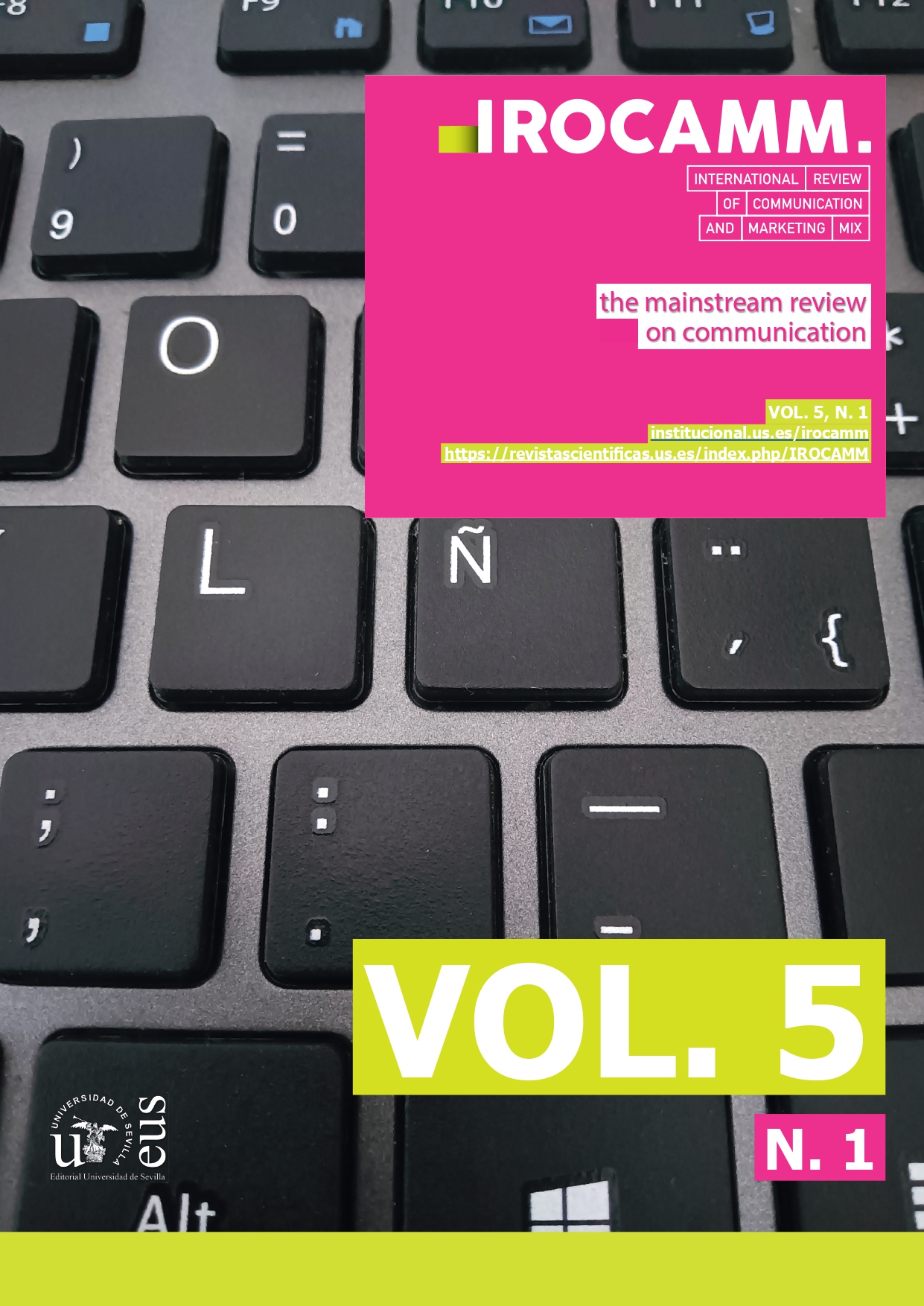Abstract
This paper is a result of research about Generation Z or Centennials carried out by a group of researchers from Jorge Tadeo Lozano University. The article develops a vision of this generation about her construction and representation of her being in the digital universe, its stages, and the role of money. Therefore, an examination is made of the main findings regarding Centennials as the first digitally native generation characterized by her ability to quickly access any type of information, and her innovative and entrepreneurial thinking. All this supported by digital platforms that offer, to Centennials, a spectrum of possibilities to create and shape the construction of their being and their social representation. Three aspects are stand out in this generation. First, they symbolically construct themselves from relationships in the network society; second, its relationship with money and the material aspects is instrumental and secondary (not an ontological relationship). Third, their connection to the material world is associated with family, publishable experiences on networks, and the acquisition and use of trending products, all of this in order to build their social representation.
References
Angelini, F.; Castellani, M. & Pattitoni, P. (2019). Artist name as human brands: brand strategies in the Italian gallery art
market. https://ssrn.com/abstract=3495474
Arango, L. C. A., & Calderón,P. G., & Romero, C. C., & Sánchez, L. I. (2020). Postdata Colombia: 8 perfiles en un país
conectado. Fundación Universidad de Bogotá́ Jorge Tadeo Lozano.
Arango, L. C. A., & Camelo, R. C., & Huertas, T. M., & Rodríguez, S. C., & Sanchez. P. C., Sanchez. R. V., Sojo, G. J. (2019).
Centennials: Una generación sin etiquetas. Fundación Universidad de Bogotá Jorge Tadeo Lozano.
Bauman, Z. (2012). Vida de consumo. Fondo de cultura económica.
Bonaga, C., & Turiel, H. (2016). Mamá, quiero ser youtuber: Todas las claves para entender el fenómeno que ha venido
para quedarse. Booket.
Buci-Glucksmann, C. (2007). Estética de lo efímero. Arena Libros.
Castells, M. (2008). La era de la información: economía, sociedad y cultura. Vol. 1: la sociedad red. Alianza Editorial.
Eco, U. (1999). Lector in fabula. La cooperación interpretativa en el texto narrativo. Lumen.
Estévez, L. E., Martínez, F. B., & Musitu, O. G. (2006). La autoestima en adolescentes agresores y víctimas en la escuela:
La perspectiva multidimensional. Psychosocial Intervention, 15(2), 223-232. https://doi.org/10.4321/S1132-
Elías Zambrano, R.; Jiménez-Marín, G. (2021). Reflexiones en torno a la comunicación organizacional, la publicidad y el
audiovisual, desde una perspectiva multidisciplinar. Fragua.
Garaigordobil,Maite, & Durá,Ainhoa. (2006). Neosexismo en adolescentes de 14 a 17 años: relaciones con autoconceptoautoestima,
personalidad, psicopatología, problemas de conducta y habilidades sociales. Clínica y Salud, 17(2),
-149. https://bit.ly/3In5z55
García, C. N. (2009). Consumidores y ciudadanos: Conflictos multiculturales de la globalización. Random House Mondadori.
Giddens, A. (1996). Modernidad y autoidentidad. En Beriain, J. (ed.) (2001). Las consecuencias perversas de la modernidad.
Anthropos.
Goffman, E. (2001). La presentación de la persona en la vida cotidiana. Amorrortu.
Greimas, A.J. & Courtes, J. (2006). Semiótica. Diccionario razonado de la teoría del lenguaje. Gredos.
Han, B. C. (2015). The transparency society. Stanford University Press. https://doi.org/10.1515/9780804797511
Harris, M. (2011). Antropología cultural. Editorial Alianza.
Jiménez-Marín, G.; Delgado Brull, M. T. (2007). Nuevos consumidores masculinos, nuevos productos. Comunicación
alternativa, ciudadanía y cultura, 2 (8), 327-335
Molero López-Barajas, D.; Ortega Alvarez, F.; Valiente Martínez, I.; Zagalaz Sánchez, M.L. (2010). Estudio comparativo del
autoconcepto físico en adolescentes en función del género y del nivel de actividad físico-deportiva. RETOS. Nuevas
Tendencias en Educación Física, Deporte y Recreación, 17, 38-41. https://bit.ly/3GMnphy
Moncada-Santos, C. M., & Fontelo-Danta, L. (2018). La construcción cultural de la sexualidad en adolescentes. Santiago,
, 331–347. https://bit.ly/2DZfEd7
Morales Gualdrón, L. V.; Buitrago Umaña, E. M.; Marín Mejía, Y. A. (2013). Identidad, tribus urbanas y redes sociales: un
estudio de caso en adolescentes. Encuentros, 2, 77–92. https://bit.ly/3c0xHMG
Navarrete Montes de Oca, M. (2017). Enseñando a vivir bien a la generación de cristal. Revista Digital de Investigación
Lasalina, 7(14), 82-97. https://bit.ly/35w8Krb
Ortiz, R. (2003). Globalización y esfera pública. En Pereira, J. M.; Villadiego Prins, M. (ed). Comunicación, cultura y
globalización. Centro Editorial Javeriano.
Paz, O. (1993). La llama doble Amor y erotismo. Seix Barral.
Peirce, C. S. (1985). Historical perspectives on Peirce’s logic of science: a history of science. Mouton Publishers.
Peirce, C. S. (1992-1997). The Essential Peirce. Indiana University Press.
Peirce, C. S. (1994). The Collected Papers. Harvard University Press.
Picheta, R. (2018) Los memes pueden contribuir a la obesidad en adolescentes, dicen académicos. CNN Wire Español.
Platón. (1987). El Crátilo. En Diálogos Tomo II. Gredos.
Ramírez, M. A. (2019). Homo economicus: las estéticas de consumo y su incidencia en la constitución de subjetividad. XIII
Jornadas de Sociología. Facultad de Ciencias Sociales, Universidad de Buenos Aires.
Sassatelli, R. (2012). Consumo, cultura y sociedad. Amorrortu.
Tentori, T. (1981). Antropología cultural. Barcelona: Herder.
Tur, V.; Ramos, S. I. (2008). Marketing y niños. ESIC.
Tylor, E. B. (1975) La ciencia de la cultura. En Kahn, J.S. (ed.). El concepto de cultura: textos fundamentales, 29-46.
Anagrama.
Vattimo, G. (2011). En torno a la posmodernidad. Anthropos.

This work is licensed under a Creative Commons Attribution-NonCommercial-ShareAlike 4.0 International License.
Copyright (c) 2022 IROCAMM - International Review Of Communication And Marketing Mix

